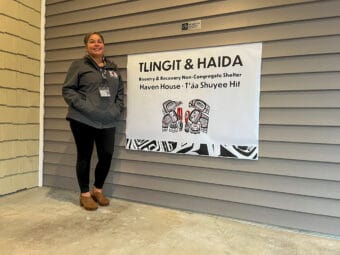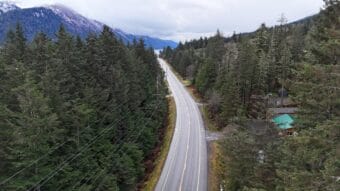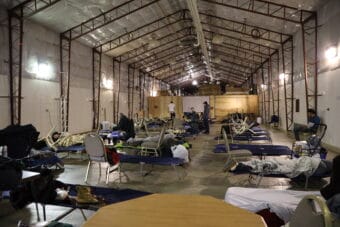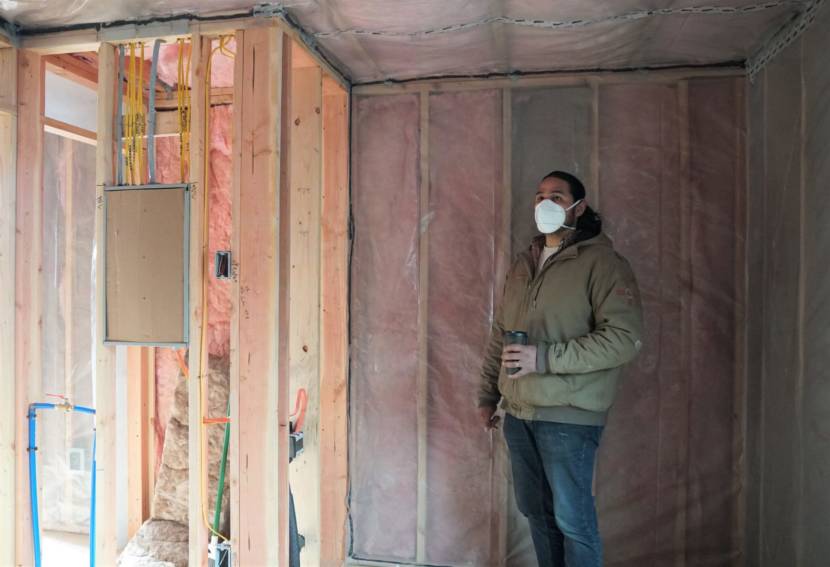
Most businesses in Southeast Alaska say a lack of workforce housing is hurting their economic outlook. For some, it’s a major barrier to success. That’s according to a recent survey of 440 businesses in the region.
The annual survey looks at how businesses are faring in the region. And while they’re generally optimistic after two pandemic years, the region still faces economic headwinds. In this year’s survey, 72% of respondents indicated that housing is one of their top problems.
“We’ve just been struggling,” said Jaylene Owen, human resources and payroll director for the Hames Corporation in Sitka, where a region-high 88% of businesses say a lack of workforce housing is weighing on profits. The family-owned company has several stores from groceries to gas and employs 150 people. Many are renters, and that’s a big challenge.
“There’s just no place to rent,” Owen said. “My employees were leaving me and telling me things like, ‘I can’t afford to live here.’”
At the worst point last year, Hames had 40 open jobs it couldn’t fill. Owen says the corporation has tried to sweeten the deal for workers. They’ve given three raises in the last year and half, and they might offer a fourth. They’ve also beefed up the employee discount, taking a hit on their own profits. But they are still stretched thin.
“I have employees that are pulling 120 hours a payroll because they put in 40 hours of overtime on top of their 80 because there are no workers here,” Owen said.
“I don’t see a solution in the short term,” said Scott Wagner, manager of the Northern Southeast Regional Aquaculture Association. It’s a Sitka-based nonprofit that runs salmon hatcheries that supplement stocks in Southeast.
“We have two different housing issues I guess,” he said. “One is, we have this peak need in the summer, which is hard to find short-term housing in the summertime in Sitka. It’s really hard. But then the long term housing issue is employees, especially entry level employees, being able to find affordable housing for the year.”
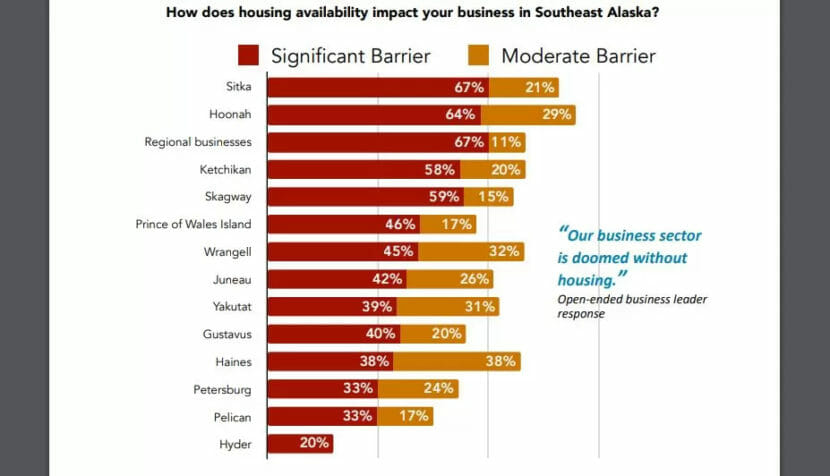
NSRAA employs 30 to 55 people depending on the season, and they provide bunk housing for some of them. Wagner says he’s running into the same issue as a lot of regional employers.
“I’m trying to think how many times we’ve had a position come open and offer [it to] somebody, and then they tell us a week later, ‘You know what, I just looked into it, I can’t afford to move there,’” Wagner said.
Housing isn’t the only economic problem affecting the workforce. Affordable childcare is another one. The pandemic and inflation have also been a big hit to economic prospects.
But housing should be a solvable problem, says Robert Venables. He’s the executive director for the regional economic development organization Southeast Conference, which commissioned the survey.
“The housing shortage and challenges is so pervasive that it’s impacting almost every single economic sector,” Venables said. “It doesn’t matter if you’re in tourism or construction, or healthcare, or retail, everybody is struggling, not only for the workers but for a place to put them if you can find them.”
It’s a complicated issue. Most towns in Southeast are on rocky, mountainous islands with limited road systems. There are only so many places to build. The region also relies heavily on summer tourism, which means more housing is needed for seasonal workers — but short-term rentals also get taken up by tourists themselves.
Still, an answer to the housing problem is needed, says Venables.
“That is definitely a challenge that has to be addressed if we’re going to thrive as a region,” he said.
But so far, solutions are elusive.
